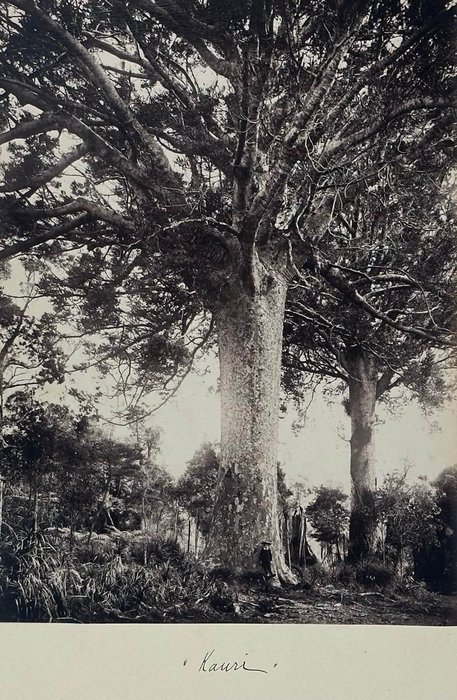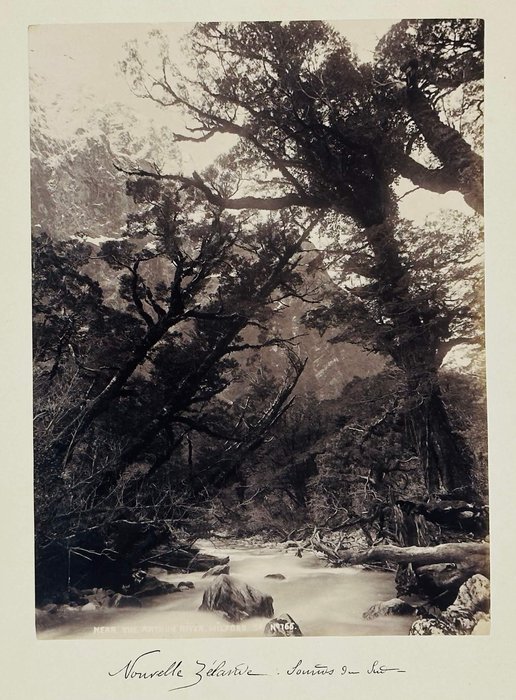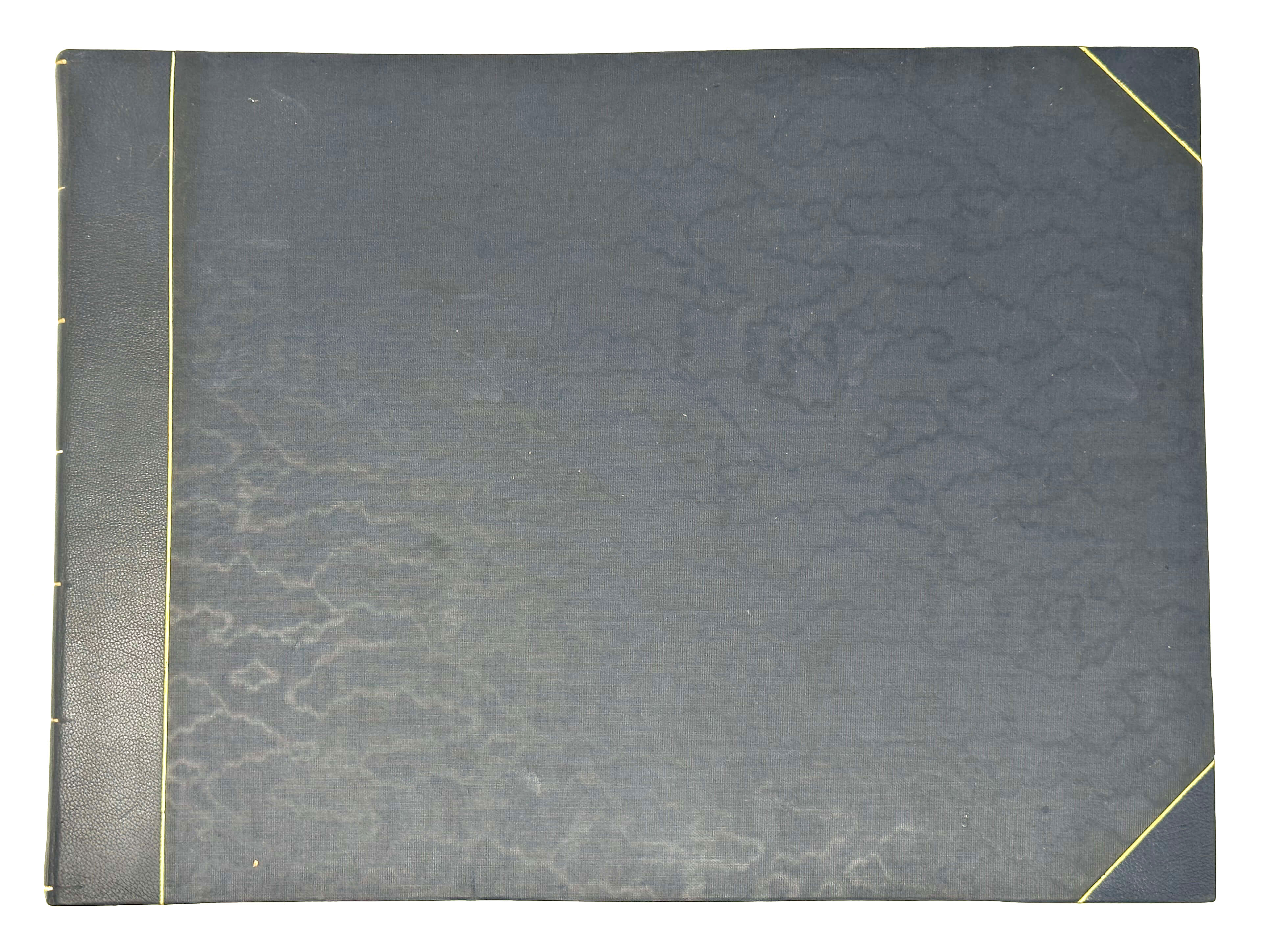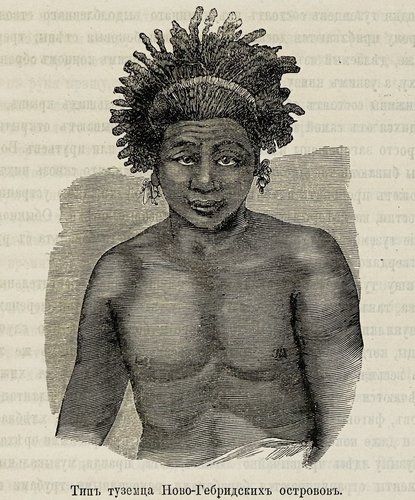












#PC79
Ca. 1880s
Oblong Folio (ca. 27.5x36.5 cm or 10 ½ x 14 ¼ in). 7 card stock leaves. 17 mounted albumen photos, from ca. 14.5x21.5 cm (5 ¾ x 8 ¼ in) to 13x19 cm (5 ¼ x 7 ½ in). Nine photos are captioned and/or numbered in negative; six photos are with blind stamps “J. Martin”; fifteen photos with period black ink captions in French on the mounts. Period-style black half morocco album with black moire cloth boards and gilt-tooled decorative borders. Mounts slightly waved and age-toned, a couple of photos mildly faded, but overall a very good album of strong interesting photos.
An early collection of large albumen photographs of New Zealand, showing cities including Auckland, Wellington, Dunedin, and Rotorua during the 1880s as well as areas around Mt. Tarawera before and after the 1886 eruption.
The album opens with photos of the Arthur River; early Port Chalmers with a view of Iona Church post-expansion; Dunedin with a view of Otago Boy’s High School and the First Church of Otago; views of Wellington and Auckland; Queen’s Wharf in Auckland; and rata and kauri trees. It also contains photos of Te Hahi o Te Whakapono (The Church of the Faith), predecessor to St. Faith’s Church at Lake Rotorua; two men observing the Malfroy geysers outside the Rotorua Sanatorium, one of whom is probably Camille Malfroy himself; bungalows at Rainbow Hill in Waiotapu; a view of Mt. Tarawera after the 1886 eruption; the Sulphur and White terraces in Waiotapu; Waikorohihi Geyser and the Brain Pot in Whakarewarewa; and the original Tametekapua meeting house in Ohinemutu with a group of Maori posing in front.
Over half of the photos are taken by either Josiah Martin or George Dobson Valentine, both notable New Zealand photographers.
“[Josiah] Martin gained an international reputation for his ethnological and topographical photographs…. His photographs are held in the art collections of many major institutions around the world…. [and] provide a record of changed landscapes and societies. Martin was one of the first photographers to realize the commercial potential of photography to encourage tourism, but he was also aware of the need for conservation of the landscape and of the role of photography in providing a documentary record.” (Te Ara: The Encyclopedia of New Zealand).
“George D. Valentine… one of New Zealand's foremost nineteenth-century photographers, outstanding for his artistic and technical skills, as well as for the timing of his photographic efforts.” (Christchurch Art Gallery, New Zealand).
A list of ink captions (spelling original):
Nouvelle Zélande: […?] du Sud; Port Chalmers (N. Z.) (20.23 Octobre); Dunedin; Wellington (25.29 Octobre); Auckland (1er-15 Novembre); Auckland – Queen’s Wharf; “Rata”; “Kauri”; Lac Rotorua – Ohinemutu (4.7 Novbre); Le Sanatorium de Rotorua et les Geysers artificiels de M. Malfroy; Rainbow Hill – Waiotapu Valley; Mt. Tarawera et vallée de Rotomahana (Etat actuel pais l’éruption de 1886); Sulphur Terace (Waiotapu Valley); White Terace (Waiotapu Valley); Maison maorie à Rotorua.




















